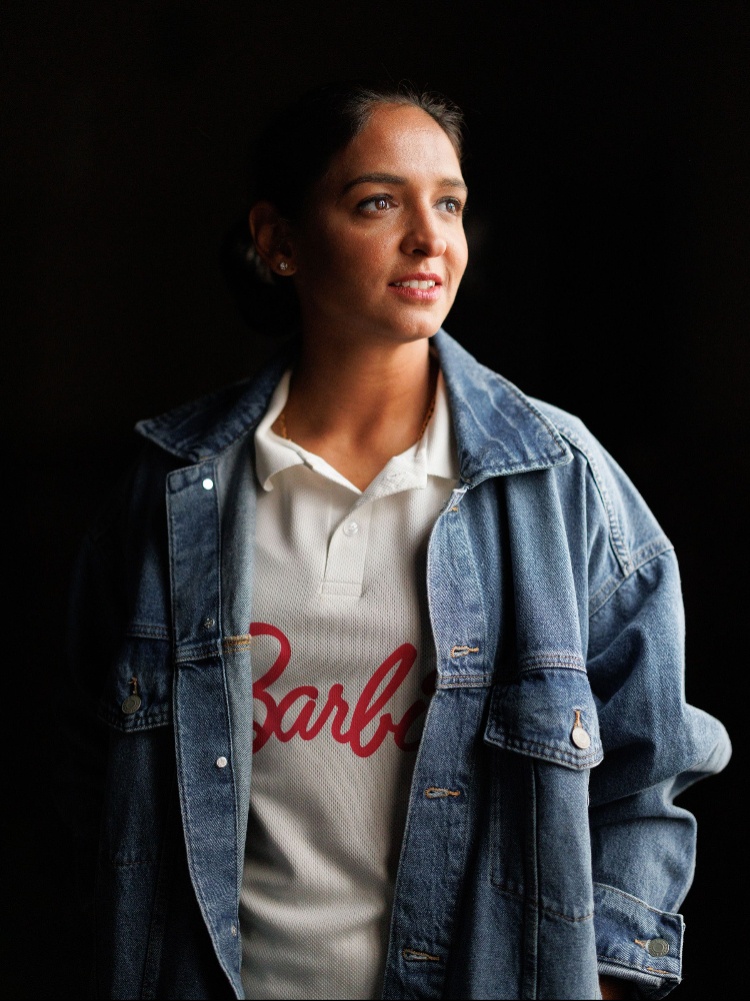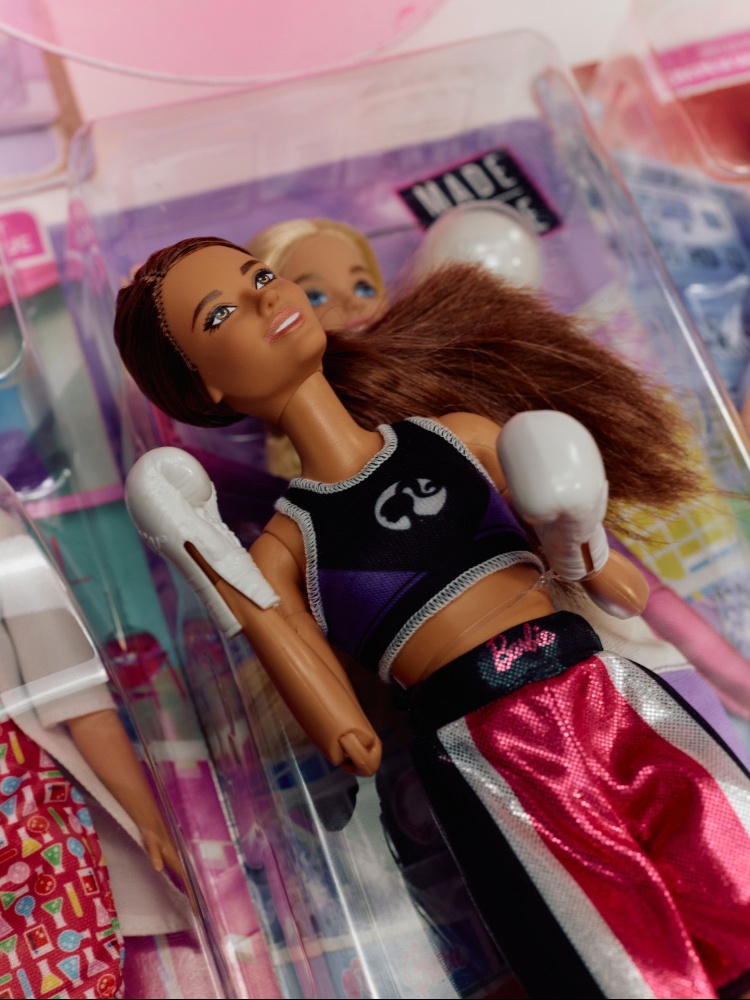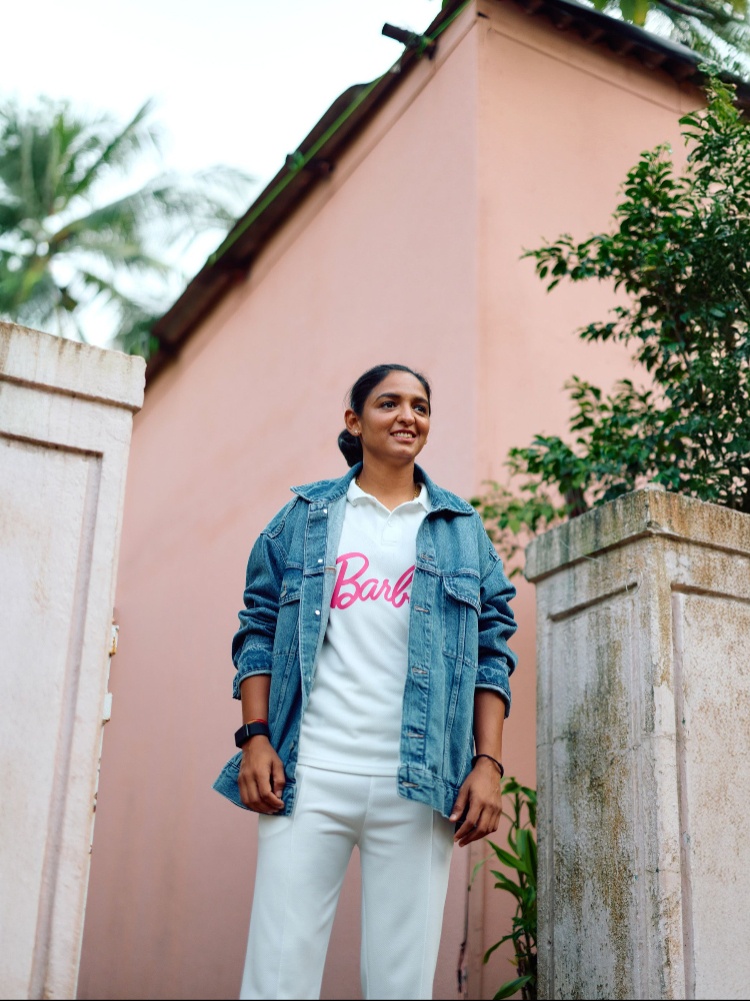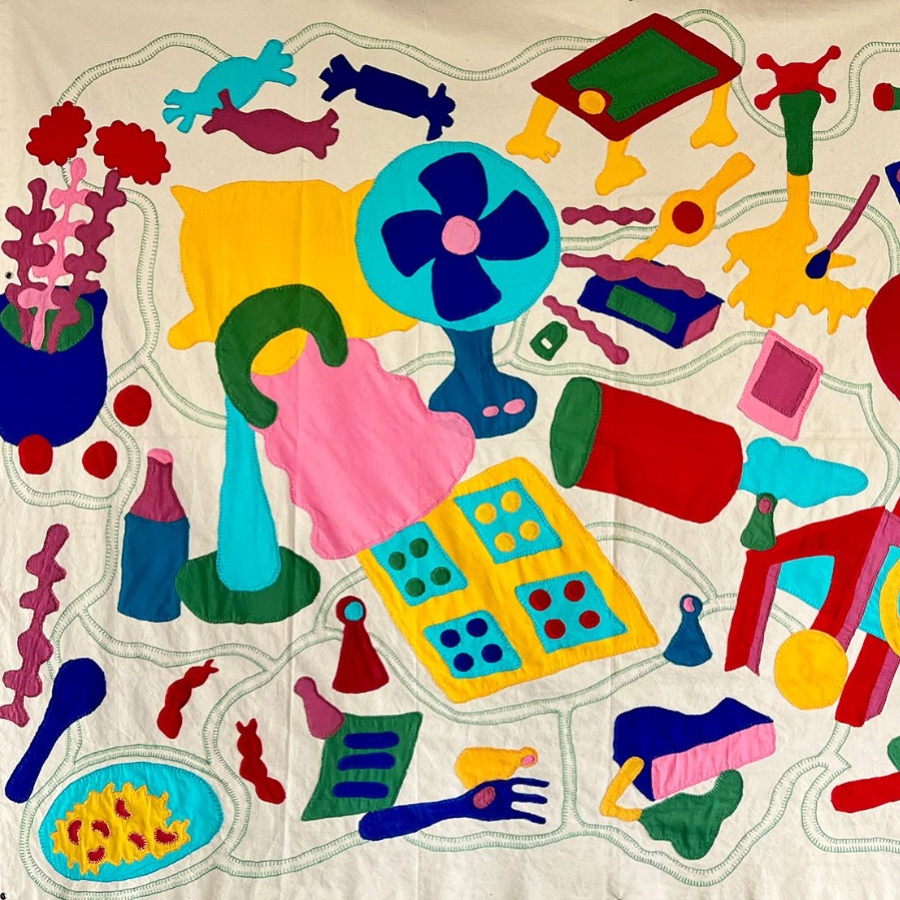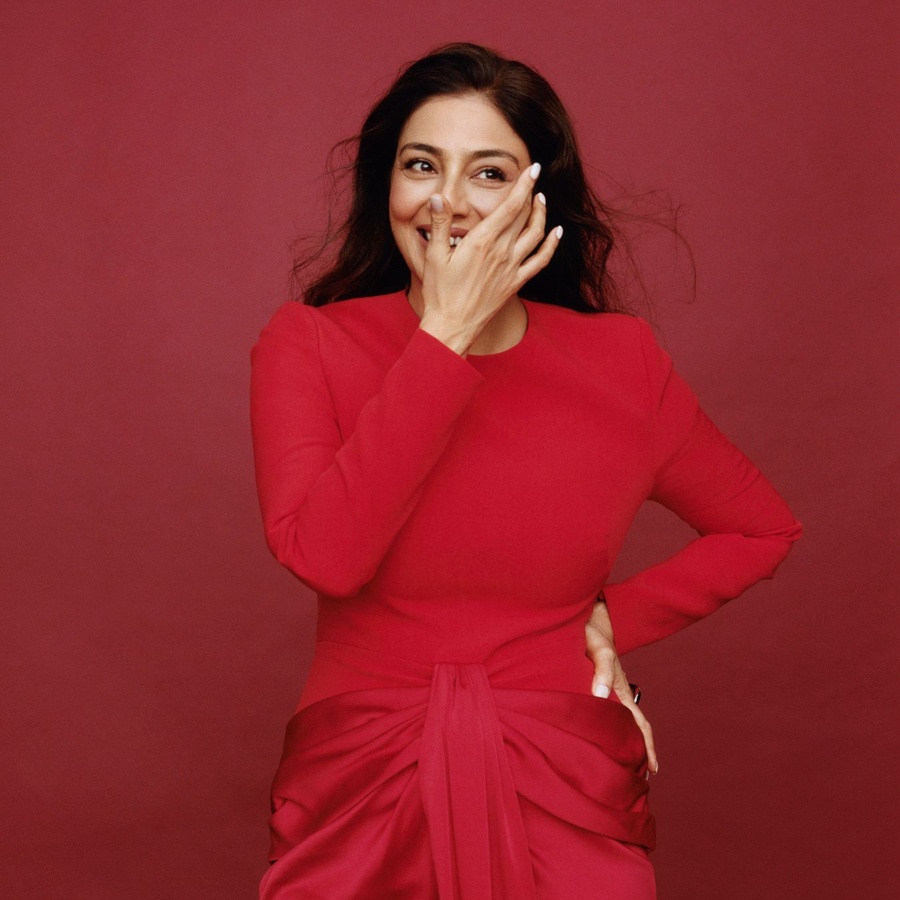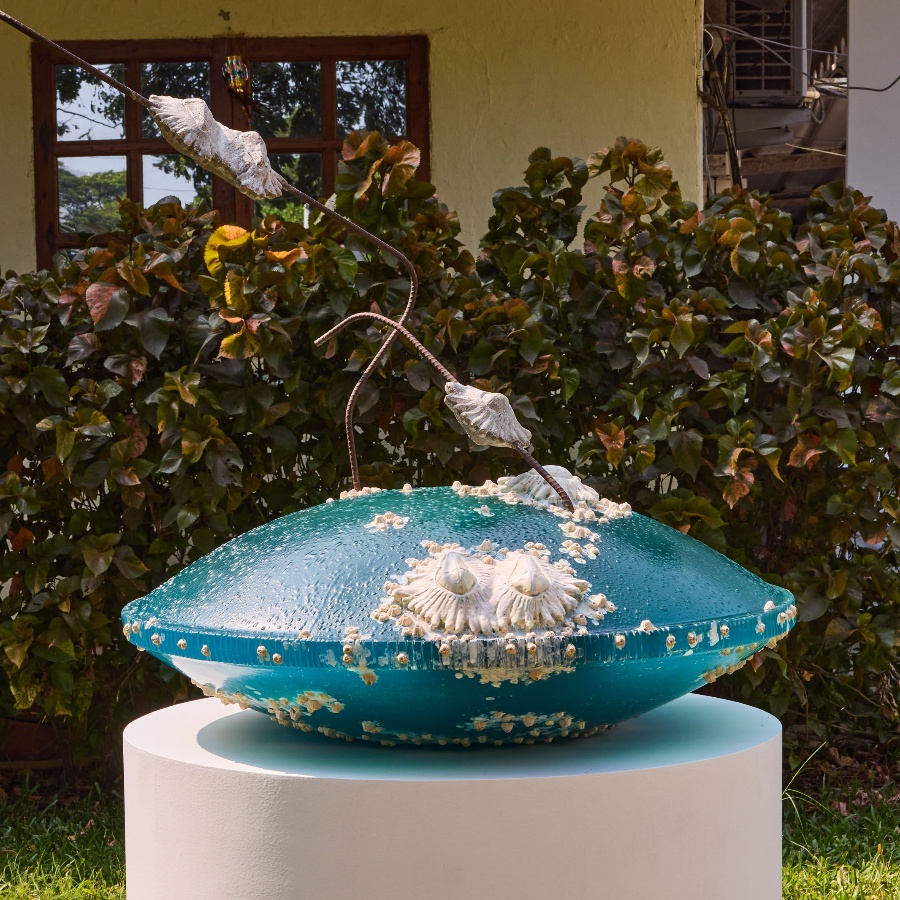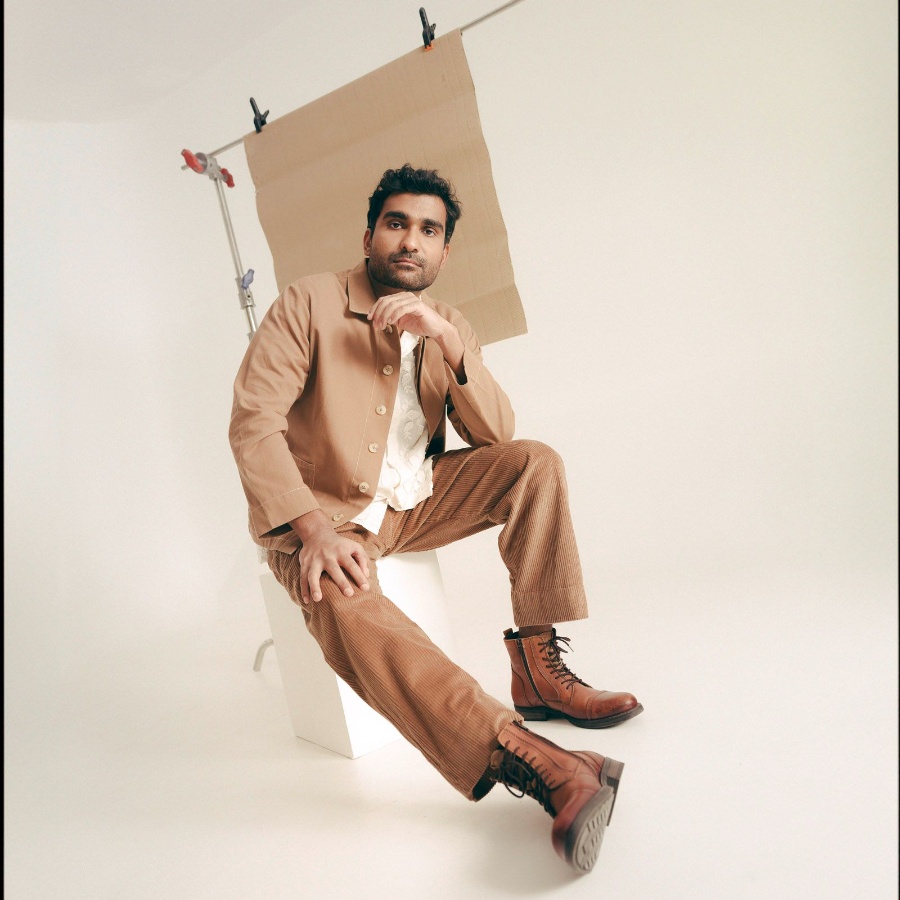It’s close to 6 pm at a film studio on a hot day in Mumbai. Harmanpreet Kaur’s day-long shoot for a new campaign for Barbie is wrapping up, and the set has been teeming with little girls, ranging from toddlers to those under 10. There have been tantrums ranging from “I won’t eat” to “I want to eat” to “I want that doll”. Yet Harmanpreet is unfazed. She’s done this before—she is someone who is at ease in front of the camera, someone who is comfortable posing for photos, someone who seems relaxed about whatever questions you throw at her.
It’s not surprising. As the captain of the Indian cricket team in all formats, she’s used to a much higher level of stress. And she knows how to make that stress work for her. The first Indian woman to score a century in a T20 match, the first Indian woman with more than 3,000 runs in T20 internationals, and the first Indian woman to be signed by an international T20 cricket franchise, her record-breaking 171 (not out) off 115 against Australia in the 2017 World Cup semifinal will long be counted among the greatest ODI cricketing knocks.
For the Arjuna awardee, the newest accolade is one she has achieved off the field. She’s now the first Indian face of Barbie’s You Can Be Anything campaign, a film produced to celebrate the iconic doll’s 65th anniversary. It features Harmanpreet along with five young Barbie fans, and aims to inspire young girls break free from the shackles of convention and realise their dreams. Which is something she definitely knows a thing or two about. “I used to see Barbies in the stores, but only got interested in them when my younger sister got one, and played with it all the time. My sister had a teacher Barbie, and you know, that’s what made her want to become a teacher, which she is now! So I have really seen how this doll can inspire kids and be a role model. There was no sports Barbie at that time, so it’s great to see so many sports versions now.”
The Nod sits down to chat with her about women’s cricket, the gender pay gap, and what she’s looking forward to at the upcoming ICC Women’s T20 World Cup.
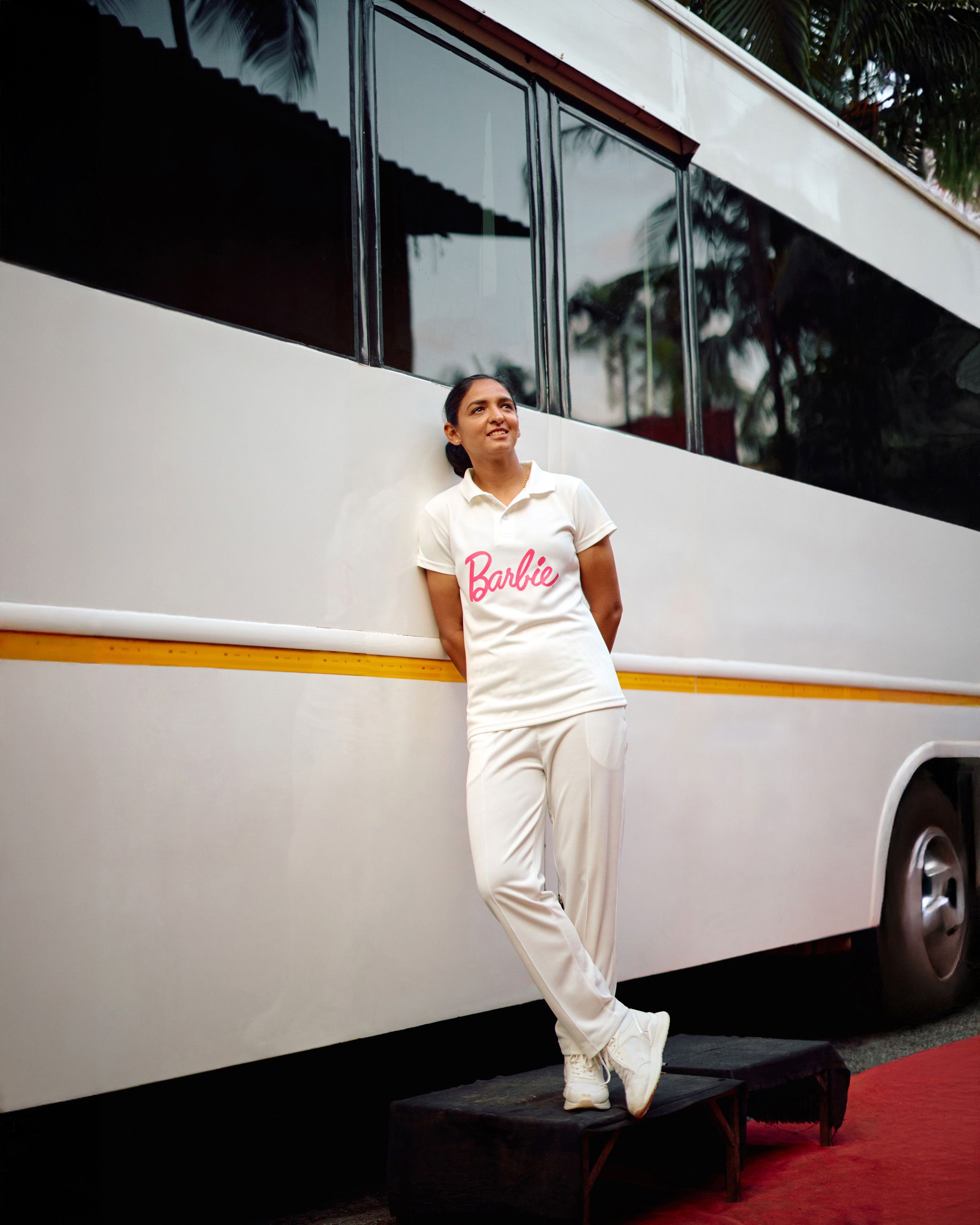
As cricket captain, Kaur is no stranger to pressure, but has attained the rare ability to make stress work in her favour
You grew up in Moga, Punjab. What made you take up cricket? Is it true that you were the only girl who played cricket with all the boys there?
Honestly, I was always interested in cricket. I started playing with my dad (my first coach) and younger brother, but I didn’t know about women’s cricket at all—I didn’t know women did, or could, play professionally. When I was in the 10th standard, my school principal saw me playing with some of the boys and he said he would open an academy for me. And I began to train there.
Although officially they’re now called men’s cricket and women’s cricket, casually, people still tend to say “cricket” and “women’s cricket”. It’s as though men’s is the default and women’s is a subset.
See, there is no doubt that cricket was a male-dominated sport. But now, we women have changed that mindset a lot. It’s a very good change that ICC tournaments specify men’s and women’s as part of the name. It’s a big change from when I started playing cricket. It is still called a ‘gentleman’s game’, but [we are trying to change this way of talking and thinking]. I’ve been part of a lot of campaigns in which we try to emphasise that cricket is anyone’s sport, anyone can play. Things are changing.
But there is still a lot that should change, right? Like the pay gap between male and female cricketers. The ICC has, only this month, announced equal prize money for men’s and women’s tournaments; and while domestically, the BCCI announced equal match fees in 2022, the fact remains that in terms of contractual annual fees, even non-regular, Grade C male players get double the pay of a Grade A female player, like a team captain.
Yes, match fees are equal now, and the BCCI is working on improving the women’s contracts. They are trying to improve women’s cricket and take it to every part of our country and abroad.
